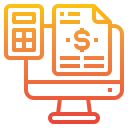Integrating Cloud Systems for Efficient Cost Management
Welcome to our home base for practical FinOps. Today’s chosen theme is: Integrating Cloud Systems for Efficient Cost Management. Dive into architectures, automations, and lived stories that help you unify data, align teams, and turn cloud spend into strategic advantage. Subscribe and share your toughest integration questions—we’ll feature real solutions in future posts.

Why Integration Drives Cloud Cost Efficiency
Creating a Unified Cost Baseline
A single, trusted baseline blends invoices, usage, and commitments across providers into one narrative. Without it, teams argue over different truths. With it, you can prioritize actions, forecast accurately, and negotiate confidently with real leverage.
Eliminating Silos Between Finance and DevOps
Integration bridges language gaps. Finance speaks budgets and forecasts; engineers speak workloads and performance. Shared pipelines and dashboards translate these worlds, making cost a feature, not a surprise. Tell us how your teams collaborate today and where it breaks.
Choosing Integration Patterns That Scale
Avoid fragile point-to-point scripts. Opt for event-driven ingestion, standardized schemas, and well-documented APIs. These patterns survive team changes and vendor shifts, protecting institutional knowledge while keeping your cost insights timely and resilient.
Reference Architecture for Integrated Cloud Cost Management
Data Ingestion from AWS, Azure, GCP, and SaaS
Pull usage, pricing, and invoice exports on predictable schedules. Stream cost and utilization events as they happen. Include SaaS seat data and network egress to reveal hidden drivers. Consistency beats complexity; document every connector meticulously for reliability.
Normalizing Tags, Labels, and Chargeback Dimensions
Create a canonical taxonomy for environment, owner, product, and cost center. Map cloud tags and labels into this model. Enforce required keys at deployment. Normalization enables true showback, cleaner anomaly detection, and trustworthy unit economics across portfolios.
Building a Secure Cost Lakehouse
Store raw invoices and normalized tables side by side for auditability. Layer role-based access controls to protect sensitive accounts. Expose semantic models for dashboards and queries, ensuring finance and engineering consume the same accurate, governed data sources.
Automation That Pays for Itself
Codify rules for idle thresholds, unsupported instance types, and unauthorized regions. Tie policies to pull requests and pipelines. When a violation appears, block or warn automatically. Transparent, consistent policies reduce drift and prevent expensive accidents before they occur.


From Dashboards to Decisions
Track cost per user, per build minute, or per transaction. Tie spend to revenue and reliability targets. When unit economics improve, you know optimization did not harm performance. When they worsen, investigate architecture, load patterns, and commitments immediately.
From Dashboards to Decisions
Anomalies are prompts for action. Contextualize by deployment, region, and feature release. A short narrative in your report—what changed, why, and what’s next—turns noise into learning. Invite stakeholders to comment directly on the story for faster resolution.
Governance Without Friction
Establish global standards, then empower domains to extend them. Provide linting in CI, and bots that suggest missing tags. Publish tag coverage scores weekly. Friendly nudges beat audits; teams adopt better habits when they understand shared benefits clearly.


Governance Without Friction
Use least privilege on raw billing exports while offering broad access to curated views. This preserves confidentiality for sensitive accounts yet keeps decision-makers informed. Clear data contracts reduce accidental exposure and prevent mistrust in reported figures across stakeholders.

Inventory accounts, connectors, and invoices. Document current tags and label gaps. Identify top three spend drivers and critical services. Define success metrics, owners, and meeting cadence so everyone knows what progress looks like and how it will be measured.

Stand up ingestion for each provider. Implement a canonical taxonomy, and backfill tags for the top cost accounts. Publish your first unified dashboard. Ask teams to react, comment, and request additional dimensions that would clarify ownership and decision-making systematically.

Introduce policy checks in CI and scheduled rightsizing. Pilot anomaly detection with clear on-call guidance. Capture wins and misses in a shared playbook. End the month with a retrospective, and subscribe for templates that make your next month even smoother.
